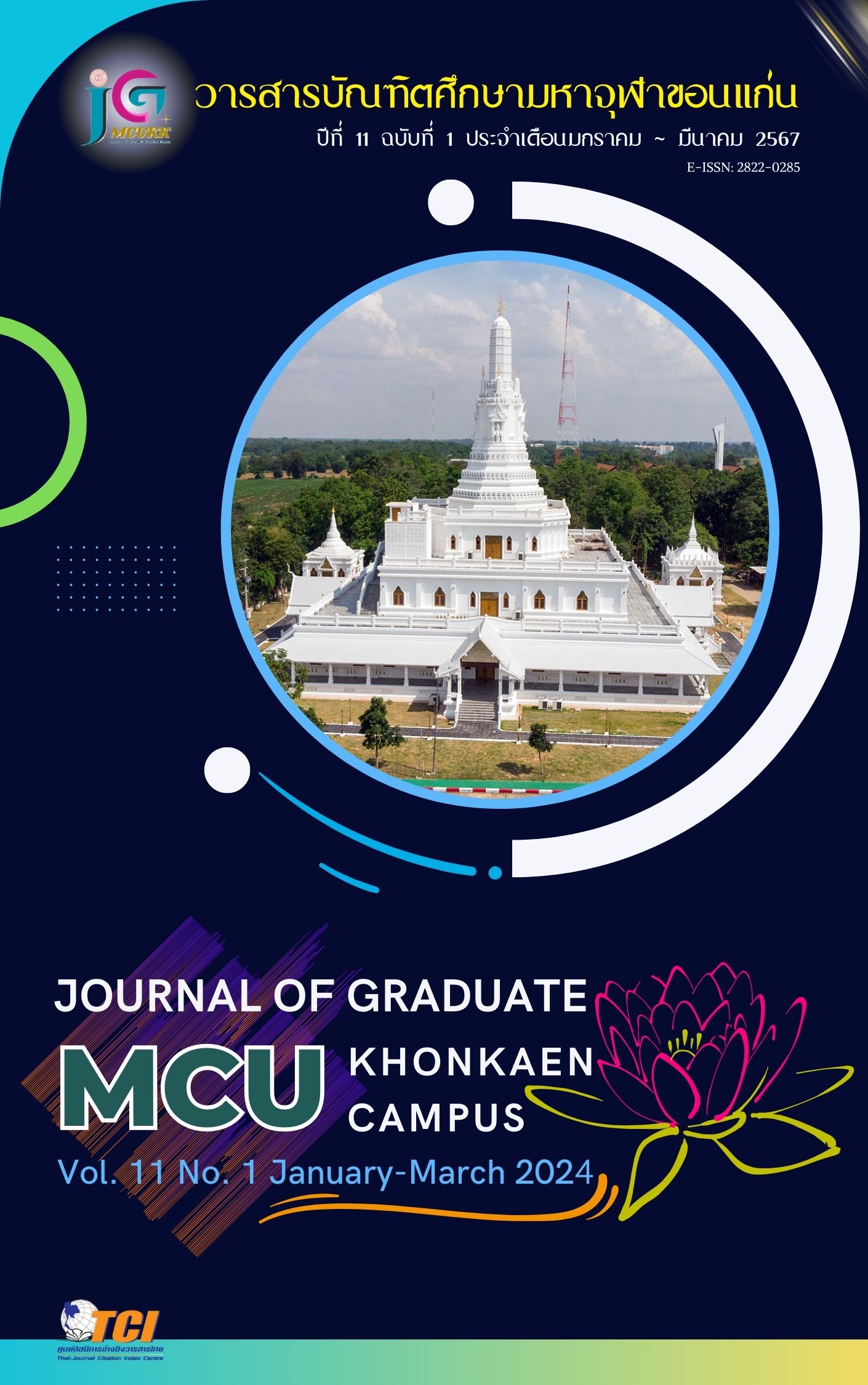Integrating Phra That Phanom's Values Influencing Life According to Theravada Buddhist Philosophy of the People of Nakhon Phanom Province
Main Article Content
Abstract
The results of the research found that:
1. History of the development and value of the relics. Built according to the legend of Urangkhathat Fable. When Phra That Nong Khai collapsed and fell into the Mekong River. Therefore, Phra That Phanom was built in the year 8 as a pagoda used to house the Buddha's chest relics.
2. Living life according to Theravada Buddhist philosophy. It is carried out according to good traditions. Consisting of 12 heats, 14 canals, the spiritual center is at Phra That Phanom, That Phanom District, Nakhon Phanom Province.
3. Integrate the values of Phra That Phanom that influence living life according to Theravada Buddhist philosophy. Phra That Phanom is unique to Buddhists who believe that Any person who goes to worship will make himself and his family have a better life according to Theravada Buddhist philosophy by worshiping in two ways: Amis worship, which is worshiping with material things. and practice worship It is worship by practicing Vipassana meditation according to the influence of word of mouth from generation to generation.
4. There is a new element called "AEW MODEL". A = Avail is the value resulting from worshiping Phra That Phanom, E = Effect is the influence according to the principles. Thoughts, beliefs, faith and behavior, W = Way of life is the way of life of individuals, society, communities, and the public in peace and harmony, Disciplined
Article Details

This work is licensed under a Creative Commons Attribution-NonCommercial-NoDerivatives 4.0 International License.
References
กรมศิลปากร. (2553). การอนุรักษ์โบราณสถาน : การขึ้นทะเบียนโบราณสถาน. กรุงเทพฯ: กระทรวงวัฒนธรรม.
เทพพร มังธานี. (2541). มงคลชีวิต. กรุงเทพฯ: เลี่ยงเชียง.
พระคัมภีรถูปวงศ. (2511). ตํานานว่าด้วยการสร้างพระสถูปเจดีย์. พระนครศรีอยุธยา: นนทชัย.
พระชุติพนธ์ อานนฺโท (นามสมุทร). (2552). อิทธิพลของเจดียในพระพุทธศาสนาที่มีผลต่อสังคมไทย. (วิทยานิพนธ์พุทธศาสตรมหาบัณฑิต). พระนครศรีอยุธยา: มหาวิทยาลัยมหาจุฬาลงกรณราชวิทยาลัย.
พระพรหมโมลี (วิลาศ ญาณวโร, ป.ธ.9). (2525). โลกทีปนี. กรุงเทพฯ: ดอกหญ้า.
พระมหาประสพฤกษ จารุวาโท (รัตนยงค). (2550). การศึกษาเชิงวิเคราะห์แนวความคิดเรื่องการบูชาในพระพุทธศาสนา. (วิทยานิพนธพุทธศาสตรมหาบัณฑิต). พระนครศรีอยุธยา: มหาวิทยาลัยมหาจุฬาลงกรณราชวิทยาลัย.
พระมหามนตรี วลฺลโภ (ปอมสุข). (2546). อิทธิพลของวัตถุมงคลที่มีตอสังคมไทยในปจจุบัน. (วิทยานิพนธ์พุทธศาสตรมหาบัณฑิต). พระนครศรีอยุธยา: มหาวิทยาลัยมหาจุฬาลงกรณราชวิทยาลัย.
พระมหาสมชาย ธีรปภาโส (บุญเกลี้ยง). (2546). การศึกษาเชิงวิเคราะห์ความเชื่อเรื่องพระบรมสารีริกธาตุในสังคมไทย. (วิทยานิพนธพุทธศาสตรมหาบัณฑิต). พระนครศรีอยุธยา: มหาวิทยาลัยมหาจุฬา ลงกรณราชวิทยาลัย.
พระราชปรีชาญาณมุนี (นวน เขมจารี). (2542). สมณศักดิ์ก่อนมรณภาพเป็น พระธรรมปริยัติมุนี ประวัติพระมหาธาตุ (เจดีย) กลางน้ำ อำเภอเมืองหนองคาย. หนองคาย: มิตรไทย.
ศ. ธรรมรัตน์. (2551). พระบรมธาตุศักดิ์สิทธิ์. กรุงเทพฯ: มิตรสัมพันธ์กราฟฟิค.
สมเด็จพระเจ้าบรมวงศ์เธอ กรมพระยาดำรงราชานุภาพ. (2513). ตำนานพระพุทธเจดีย์. ธนบุรี: รุ่งวัฒนา.

